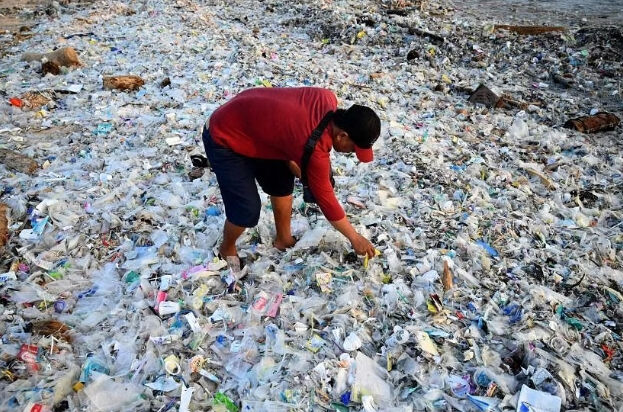4 things to know about microplastics and you
By Romaine Chan, The Straits Times
Microplastics are defined as plastic particles smaller than 5mm, and sometimes as small as 1 micron, or one-70th the width of human hair.
People in South-east Asian countries ingest the most microplastics among 109 countries, based on a recently published study by Cornell University researchers.
Microplastics are defined as plastic particles smaller than 5mm, and sometimes as small as 1 micron, or one-70th the width of human hair. They can enter the human system in different ways.
Other related studies have shown that these fibres, granules or fragments that enter your circulatory, respiratory and digestive systems can have long-term effects and lead to various diseases.
Here are four things that you should know about microplastics and you.
1). Microplastics are hidden in the food you eat daily: While the Cornell study did not specify statistics for Singapore, our neighbours in Indonesia consume about three credit cards worth of microplastics – or 15g – every week. Much of this is through the food they consume.
Similarly, when you eat ready-made meals, use disposable cutlery, drink bottled water, or even squeeze chilli or ketchup from a sauce packet, microplastics are being shed off the packaging into your food.
If you drink three cups of hot coffee from paper cups lined with plastic, you can ingest around 75,000 micron-sized plastic particles.
If you eat seafood often, you will likely consume even more microplastics that enter the oceans through open dumping, waste run-off and degradation of larger plastic waste in the seas, then travel through the marine food web.
Waterborne microplastics can be mistaken for food by aquatic organisms like phytoplankton and zooplankton, which are consumed subsequently by bigger marine animals like fishes and shellfish – which you may end up eating.
- We inhale millions of microplastic particles daily, too: Not only do you eat microplastics, you breathe them in too.
This is especially since much of the clothes we wear are synthetic, and continually shed microfibres into the surrounding air.
Furthermore, factories in industrialising countries near Singapore emit microplastics into the air, when waste from producing synthetic fabrics and clothes, electronics and the packaging of the groceries we buy are dumped into their surrounding oceans. This plastic may travel to ocean bodies surrounding Singapore.
Compared with people in north-western Europe, who generally inhale 0.3 million particles of microplastics a day, those in South-east Asia inhale an estimated 2.8 million particles per day. This can be due to the high number of plastic in production processes, and high amounts of ocean activities like fishing.
- Microplastics can accumulate in your system till you are in your 70s: Scientists are studying how extensively ingested or inhaled microplastics migrate from the gut and lungs to other organs and tissues, and what health risks humans face from absorbed particles, which have been linked to various harmful effects in animals.
Even though bigger plastic particles we ingest are usually excreted out of our bodies, small microplastic particles that enter the body can stay as they are generally resistant to biodegradation.
Sharp particles can irritate your gut and cause inflammation. Microplastics can also permanently build up in your body over the course of your life, releasing chemicals that may disrupt hormone function and increase the risk of cancer over the years.
When inhaled, the plastic particles may trigger coughing and other breathing difficulties, and aggravate conditions like asthma.
- Microplastics may also be residing in your reproductive organs: Micron-sized plastic particles can enter your bloodstream and travel to various parts of your body – like your reproductive organs.
Microplastics found in the testicles in men are hypothesised to potentially reduce fertility by disrupting hormones, possibly causing gene mutations.
Studies have also found microplastics in women’s placenta, which provides nutrients to the foetus. This raised questions about fertility and the risks of the baby being born underdeveloped or getting cancer later in life.
Sources: International Journal of Environmental Research and Public Health, Yonsei Medical Journal, Animal Reproduction, ACS Publications, Microorganisms.

